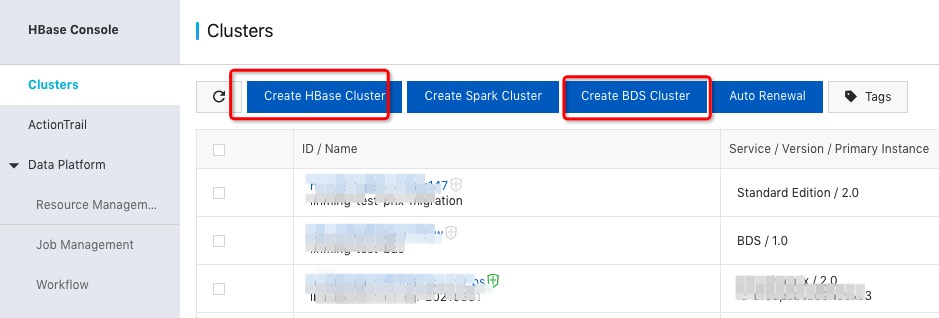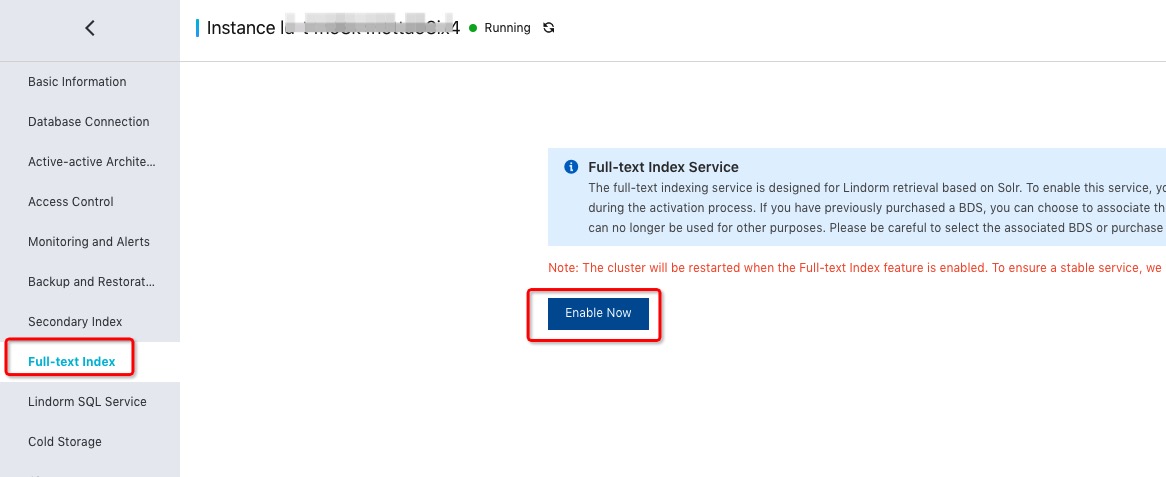To activate the Search service, you must purchase an ApsaraDB for HBase Enhanced Edition cluster and a Big Data Service (BDS) cluster that are deployed in the same virtual private cloud (VPC). If you have an ApsaraDB for HBase Enhanced Edition cluster and a BDS cluster, skip this step.
To purchase ApsaraDB for HBase Enhanced Edition and BDS, click Buy Now on the product page of ApsaraDB for HBase and specify the required cluster and configuration on the buy page. You can also click Create HBase Cluster and Create BDS Cluster in the HBase console.

Activate the Search service
- To activate the Search service, log on to the ApsaraDB for HBase Enhanced Edition console and click Full-text Index in the left-side navigation pane.

- On the page that appears, select the associated BDS cluster.Note You can select only the BDS cluster that is in the same VPC as the purchased ApsaraDB for HBase Enhanced Edition cluster. The BDS cluster must not be associated with a different HBase cluster in the full-text index link.
- Select the cluster type. The Search service requires a large memory capacity and high disk I/O performance. We recommend that you select a high-capacity standard solid-state (SSD) disk and local SSD disk for the cluster. If you have questions about the cluster specifications, you can contact customer service in the
ApsaraDB for HBase Q&ADingTalk group or submit a ticket for support.
Warning During the activation process, the HBase cluster and BDS cluster are automatically updated to the latest version. In addition, the system may become unstable during the upgrade process. We recommend that you activate the service during off-peak hours. You cannot associate the BDS cluster that you select with other clusters or use it for other purposes. Proceed with caution.
View the activation progress
After you activate the Search service, the following instances are listed in the console: an ApsaraDB for HBase Enhanced Edition instance ld-t4n33q6tj8hexxxx, a BDS instance bds-t4n579vl2f74xxxx, and a Search instance ld-t4n33q8he022kxxxx-m1-se. For the BDS instance, you can see that the instance is associated with ld-t4n33q8he022kxxxx in the 
Service/Version/Primary Instance column. For the Search instance, you can see that the instance is associated with ld-t4n33q8he022kxxxx in the Service/Version/Primary Instance column. You can use the Search service after the status of these instances becomes Running.